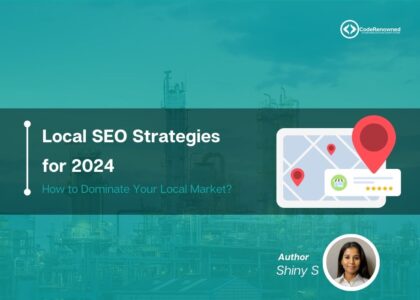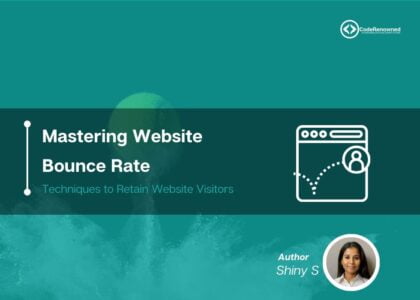Headings for Crawlability and Indexability
A Guide to Structuring your content for Search Engines

In Search engine optimization (SEO), crawlability and indexability are crucial to ensure a website’s content is discoverable, understandable, and ranked by search engines. The one usually disregarded yet powerful tool for achieving this through the strategic use of headings. In the article below, Let’s delve into the importance of headings in SEO and explore their effective strategies for improving crawl ability and indexability through their optimization.
Crawlability vs. Indexability: Understanding the Difference:
Crawlability
- It refers to a search engine’s ability to discover and access the website’s content.
- Search engine bots (also known as crawlers or spiders) navigate the website through links, following their path to discover new and updated content.
- A well-structured website with uncomplicated internal linking facilitates smoother crawling.
Indexability:
- When a search engine bot discovers the content, it needs to understand it to index it for search results.
- The process involves examining the content for relevance and determining how it is ranking for specific search queries.
- Precise and informative headings provide valuable context for search engines, assisting the indexing process.
Understanding the Role of Headings in SEO:
Headings, conveyed by HTML tags like H1, H2, H3, etc., serve a double intent in web content. They provide structure and organization to the content by making it more readable and accessible for visitors.
Search engines rely on headings to decode the order and relevance of content on a webpage. Proper optimization in headings improves user experience and provides valuable signals to search engine crawlers by enhancing the website’s SEO performance.
Choose Appropriate Heading Tags:
- The selection of heading tags must reflect the ordered structure of the content.
- The main title is enclosed within an H1 tag of the page, followed by H2 tags for section headings, and so on.
- This order aids in organizing the content and helps search engines understand the relationships between different sections of the webpage.
Incorporate Target Keywords:
- Strategic placement of keywords within headings impacts the website’s search engine rankings.
- Identify relevant keywords that align with the intent of the content and seamlessly merge them into the headings.
- Avoid keyword stuffing for penalties from search engines.
- Aim for a natural and contextual use of keywords that enhances readability and SEO.
Maintain Consistency and Relevance:
- Consistency in heading styles throughout the website promotes a sense of clarity and professionalism.
- Ensure the headings cling to a consistent formatting style, including font size, color, and alignment.
- Prefer relevancy by crafting headings that accurately reflect the content of the corresponding sections.
- Misleading or irrelevant headings can confuse both users and search engines.
Utilize Long-Tail Headings:
- Long-tail headings, having longer specific phrases, can be incredibly effective in targeting niche keywords and capturing user intent.
- Include long-tail headings within the content strategy to address specific queries and attract highly targeted organic traffic.
- It enhances crawlability and improves the likelihood of ranking for specialized search queries.
Optimize Headings for Featured Snippets:
- Featured snippets, or “position zero” results, are notably displayed at the top of search engine results pages (SERPs) and can increase visibility and organic traffic.
- To optimize headings for featured snippets, craft them as brief, informative questions or answers that address common user queries.
- Structuring headings in a question-and-answer format increases the likelihood of the content being selectable for featured snippet placement.
Leverage Semantic Markup:
- Semantic markup, like schema.org vocabulary, delivers additional context to search engines about the content on the webpage.
- Incorporate structured data markup within the headings to provide explicit cues about the information within each section.
- It improves crawlability and enhances the likelihood of the content appearing in rich snippets, knowledge panels, and other enhanced search results.
Benefits of Using Headings for SEO:
Below are some key benefits of using headings effectively for SEO:
- Improved Crawlability: Headings signal the structure of the content, allowing bots to crawl and understand your pages more efficiently.
- Enhanced Indexability: Headings provide context hints for search engines. By incorporating relevant keywords and outlining the main topics, determining their relevance for specific search queries.
- Boosted User Engagement: Headings break up long blocks of text, improving readability and user experience. Users can quickly scan the content to grasp the main points and identify sections relevant to their interests. It can lead to increased engagement and longer time spent on the website.
- Potential Ranking Signal: Some SEO experts believe that search engines may use headings as a ranking factor. High-quality headings with relevant keywords could contribute to a slight improvement in search ranking.
Conclusion
Combining effective heading strategies is one fundamental aspect of optimizing the website for improved crawlability and indexability. Crafting Headings Informative, relevant, and keyword-optimized can provide valuable signals to search engines, improve user experience, and elevate the website’s SEO performance. Accept these strategies as integral components of your SEO toolkit and watch as the website climbs the ranks of search engine results, driving increased organic traffic and engagement.






